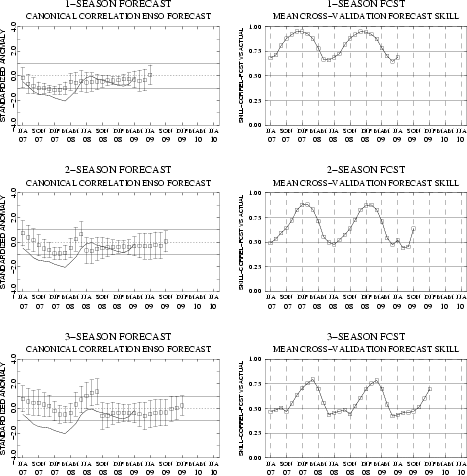 |
Canonical Correlation Forecast for Nino 3.4 Region: Historical
MAY 2009

FIGURE F1.
Canonical correlation analysis (CCA) sea surface temperature (SST)
anomaly prediction for the central Pacific (5N to 5S, 120W to 170W
(Barnston and Ropelewski, 1992,i J. Climate, 5, 1316-1345). The
three plots on the left hand side are, from top to bottom, the 1-season,
2-season, and 3-season lead forecasts. The solid line in each forecast represents
the observed SST standardized anomaly through the latest month. The small squares
at the mid-points of the forecast bars represent the real-time CCA predictions
based on the anomalies of quasi-global sea level pressure and on the anomalies of
tropical Pacific SST, depth of the 20C isotherm and sea level height over the prior
four seasons. The vertical lines represent the one standard deviation error bars
for the predictions based on past performance. The three plots on the right side
are skills, corresponding to the predicted and observed SST. The skills are derived
from cross-correlation tests from 1956 to present. These skills show a clear annual
cycle and are inversely proportional to the length of the error bars depicted in the
forecast time series.
|
 |


